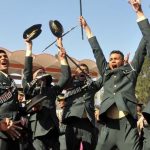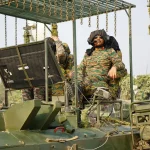Hindustan Aeronautics Limited (HAL) has demonstrated strong financial growth in its second quarter, showcasing a remarkable 22.1% year-on-year increase in profit, driven primarily by a heightened demand for its aircraft from the Indian Ministry of Defence. The state-owned manufacturer of fighter jets and maintenance solutions reported a consolidated net profit of ₹1,510 crore for the quarter ending September 30, a notable rise from ₹1,237 crore during the same period last year.
A significant contributor to HAL’s financial success was the recent ₹26,000 crore engine manufacturing contract awarded by the Indian Air Force. This contract is expected to bolster HAL’s earnings further as the defence sector exhibits robust order activity, underscored by ongoing fulfilment of existing manufacturing contracts and a steady increase in the demand for spare parts and components. Analysts have pointed out that this strong order flow in the defence sector has played a crucial role in driving revenue growth for the company.
In its latest annual report, HAL emphasized the importance of its spare parts and maintenance division, which has seen substantial sales and made a considerable contribution to the company’s overall revenue stream. For the quarter in review, HAL reported a 6% rise in revenue from operations, amounting to ₹5,976 crore, while its total expenditure saw a marginal increase of 1.3%, indicating effective cost management amidst rising sales.
In the broader context of the defence sector, India Electronics, a competitor in the space, recently announced a significant 38.4% increase in its quarterly profits. Meanwhile, Bharat Dynamics is also anticipated to release its financial results soon.
In reaction to HAL’s impressive quarterly performance, the stock market responded positively, with HAL’s shares surging by up to 2.2% following the announcement. As of the latest trading updates, the stock showed a 1.4% increase, with shares trading at ₹4,127.1. This upturn reflects the market’s confidence in HAL’s capabilities and the ongoing strength of demand from defence entities.













